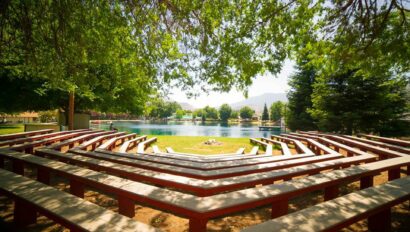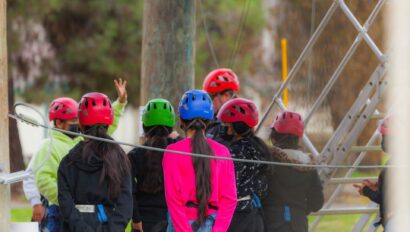
The classroom is a powerful place, but sometimes the best lessons happen far beyond its four walls. In California, with its stunning natural landscapes and rich history, a field trip can transform a textbook lesson into a memorable, hands-on adventure. From the towering redwoods of the north to the sun-drenched trails of the south, our state offers a wealth of learning opportunities. For teachers, the biggest hurdle isn’t finding the perfect destination, it’s finding the field trip funding to get there.
The good news is that California schools, districts, and counties have a variety of funding streams that can be used to support educational field trips. While the names and labels on these funds may change from year to year, understanding the general categories of funding can help you navigate the system and advocate for your students’ next big learning excursion.
Types of Field Trip Funding
Funding for Student Support
A significant portion of school funding is dedicated to providing students with additional support. This includes students from low-income backgrounds, foster youth, and those who need social-emotional support. The goal of this funding is to ensure all students have access to the same enriching educational experiences, like a trip to an outdoor education program.
Our program offers a unique opportunity to use these funds. For many students, an overnight trip to a place with comfortable cabins, nutritious meals, and an engaging environment can be a truly transformative experience. By demonstrating how a trip to our camp will benefit these specific student populations, giving them a safe, supportive, and stimulating learning environment they might not otherwise have access to, you may be able to secure funding. This allows you to provide a meaningful adventure that goes far beyond a typical field trip.
Career Technical Education (CTE) Funding
Career and Technical Education (CTE) is about connecting learning to future career pathways, even for younger students. If you’re looking to connect your 4th-8th graders’ learning to future careers, Wonder Valley’s outdoor education program can be a valuable resource. It provides hands-on, exploratory learning that supports several foundational CTE pathways, which can be an excellent candidate for CTE funding.
Schools can secure this funding through state-level grants, or local partnerships and industry sponsorships. Outdoor education at Wonder Valley provides practical, real-world experiences, which is a key component for securing this financial support.
For example, our Equine Studies and Animal Care classes can provide a foundational look at animal science, while Geology and Fire Ecology offer insights into natural resource management. Using CTE funding to support these activities demonstrates to stakeholders how a trip to our facility provides hands-on learning, sparking early interest in fields that students can later pursue in high school and beyond.
After-School and Expanded Learning Funding
Many districts and schools receive funding specifically for programs that take place outside of the traditional school day. These funds are often used for after-school clubs, summer programs, and other enrichment activities. If your field trip can be planned as an after-school or weekend activity, it may be eligible for this type of funding. This is an excellent avenue for trips that are a complement to any curriculum, offering students a chance to explore a topic more deeply in a non-traditional setting, such as a visit to a museum or a science camp in the Sierra Nevada foothills.
Community and School Fundraising
While state and district funds are the primary source for many field trips, don’t underestimate the power of your own community! Many schools and parent-teacher associations (PTAs) raise money through smaller, more creative efforts that can be specifically designated for a field trip.
Examples of these grassroots fundraising events include:
- Bake sales or food drives, where the proceeds from selling baked goods or other items go directly to your class trip.
- Student-led events like a car wash, a fun run, or a carnival night where the students themselves are involved in raising the funds.
- Partnering with a local business for a “Dine-Out Night”, where a portion of the sales from a specific evening are donated to the school.
These kinds of efforts not only help you reach your field trip funding goal but also teach students valuable lessons in teamwork, community engagement, and financial planning.
Ready to Plan Your Trip?
So, how can a field trip become a reality? Start by identifying which funding streams the trip may qualify for. Then, take these steps:
- Align with Standards: Confirm that the trip meets California State and Next Generation Science Standards.
- Create a Budget: Account for every expense, from bus transportation to entry fees and chaperone costs.
- Write a Proposal: Prepare a clear, concise proposal outlining the educational value and which students will benefit.
- Talk to Administration: Meet with a principal or district administrator for guidance on funding applications and contacts.
Field trip funding doesn’t have to be a barrier to meaningful experiences. With strategic planning and an understanding of school funding, classes can move beyond the classroom walls into a world of adventure, discovery, and hands-on learning. The next lesson is just a bus ride away.



